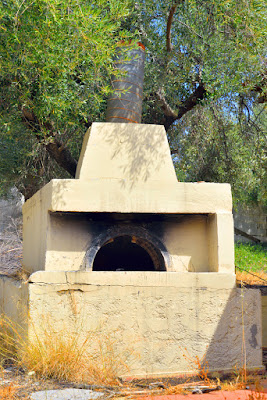Commercial Kitchen Fire Prevention Checklist
Commercial kitchen fires are a common occurrence and can have potentially devastating effects on a business. In 2015, almost 30% of non-residential building fires in the U.S. were caused by cooking. There's a very high fire risk associated with commercial cooking environments. This is due to the fast paced, highly pressured environment, combined with large volumes of naked flames, flammable cooking oil and multiple heat sources all around. Today's blog from Fast Fix LLC focuses on some tips to help prevent a kitchen fire in your restaurant or other commercial kitchen:
A fire can start unexpectedly and take hold very quickly. Due to the fact that cooking fires have one of the highest injury rates, it's important to take fire prevention steps. Following these tips and educating all kitchen staff on fire prevention is the best way to avoid a fire in your restaurant kitchen:
The cleaning and maintenance of your appliances is crucial for fire prevention. Faulty or broken equipment, especially items such as fryers, can easily lead to your kitchen going up in flames. Trust Fast Fix LLC for all your commercial kitchen equipment maintenance in Western Illinois and Missouri! Give us a call at 573-544-0456 to for emergency service or to schedule warranty work.
Fast Fix LLC. Restaurant Services
9403 County Road 154
Auxvasse, MO 65231
Phone: 573-544-0456
St. Louis Customers: 636-FASTFIX
Website: www.FastFixLLC.com
"Like" us on Facebook
"Follow" us on Twitter
"Follow" us on LinkedIn
"Follow" us on Google
Fire Prevention Checklist
A fire can start unexpectedly and take hold very quickly. Due to the fact that cooking fires have one of the highest injury rates, it's important to take fire prevention steps. Following these tips and educating all kitchen staff on fire prevention is the best way to avoid a fire in your restaurant kitchen:
- Get a fire risk assessment of your premises.
- Always follow the manufacturer's instructions for installing, operating, cleaning and maintaining your commercial kitchen equipment in Missouri and Western Illinois.
- Install appliances at an adequate distance from other surfaces.
- Use extra caution when dealing with deep fryers, as they are a common cause of kitchen fires. Overfilling them can lead to the oil going up in flames and that fire can spread quickly.
- Ensure proper ventilation is installed in your commercial kitchen and that the cooking appliances are being vented to the exterior of the building.
- Inspect solid fuel cooking appliances on a monthly basis.
- Have cooking appliances in low-volume kitchens inspected quarterly, moderate-volume kitchens inspected twice a year and high-volume kitchens inspected quarterly.
- Equip cooking appliances with non-combustible grease filters.
- Place only non-combustible, easily cleaned racks, trays, spacers and containers inside ovens.
- Empty all grease containers at least once a day.
- Keep all surface clean and tidy, especially when it comes to oil, grease and other highly flammable items that are likely to either spill or build up and easily catch fire if the opportunity presents itself.
- Train all kitchen staff on the hazards of fuel-air combustion, explosive materials and ignition sources, as well as how to operate equipment properly.
- Ensure all kitchen staff also wear appropriate clothing. Loose clothing should not be worn while cooking, sleeves should be rolled up and long hair should be tied back. Aprons are also a great way to keep clothing back away from open flames.
- Never leave something cooking in the kitchen unattended.
- Have fire equipment on hand in your commercial kitchen. This includes a fire extinguisher and fire blankets. All staff should be trained on the proper use of this equipment as well.
 Causes of Restaurant Fires
Causes of Restaurant Fires
According to the National Fire Protection Association, common causes of structure fires in eating and drinking establishments include:
- 5% Intentional Fires
- 7% Smoking Materials
- 7% Electrical Distribution and Lighting Equipment
- 10% Heating Equipment
- 57% Cooking Equipment
Our team of qualified technicians can help you keep your restaurant out of those statistics with an individualized maintenance plan!
The cleaning and maintenance of your appliances is crucial for fire prevention. Faulty or broken equipment, especially items such as fryers, can easily lead to your kitchen going up in flames. Trust Fast Fix LLC for all your commercial kitchen equipment maintenance in Western Illinois and Missouri! Give us a call at 573-544-0456 to for emergency service or to schedule warranty work.
Fast Fix LLC. Restaurant Equipment Service & Repair -
One Call Does It All!
Fast Fix LLC. Restaurant Services
9403 County Road 154
Auxvasse, MO 65231
Phone: 573-544-0456
St. Louis Customers: 636-FASTFIX
Website: www.FastFixLLC.com
"Like" us on Facebook
"Follow" us on Twitter
"Follow" us on LinkedIn
"Follow" us on Google






Comments
Post a Comment